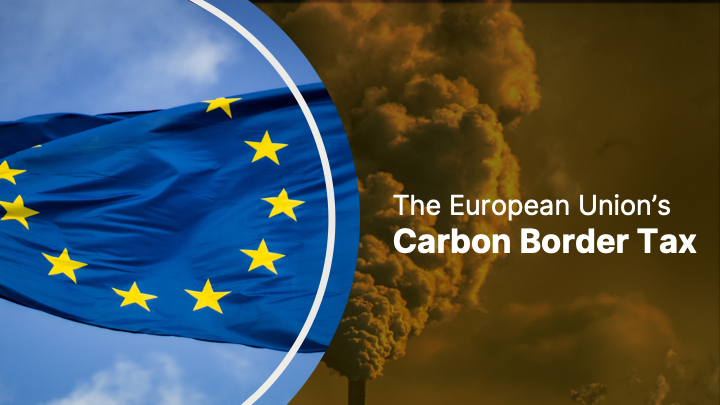The lower house of the Indian parliament passed The Energy Conservation Amendment Bill 2022 on 8 August as an amendment to the Energy Conservation Act of 2001. The bill aims to promote energy efficiency & conservation and lays the foundation for the creation of a domestic carbon exchange in India.
Indian Energy Commitments for 2030
India also formalised commitments India made during CoP26 in Nov last year. India now stands committed to reducing the Emissions Intensity of its GDP by 45% by 2030, from the 2005 level and achieving about 50 % cumulative electric power installed capacity from non-fossil fuel-based energy resources by 2030.
Last month the Ministry of Power (MoP) also issued Renewable Purchase Obligations (RPOs) and Energy Storage Purchase Obligations (ESO) until the financial year 2029-2030. By 2029-2030, combined wind, hydro and other renewable energy purchase obligations will reach a combined 43.33%, comprising 6.94% wind, 2.82% hydro and 33.57% other renewables.
The Energy Storage Obligation (ESO) specifies that the percentage of total energy consumed from solar and/or wind, with or through energy storage should be set at 1% in the 2023-2024 timeframe and gradually rise to 4% by 2029-2030, as in the table below. Energy Storage Obligation will be fulfilled when at least 85% of energy procured and stored on an annual basis comes from renewable energy sources.
Summary of Energy Conservation Bill 2022
- Obligation to use non-fossil sources of energy: minimum use of non-fossil fuel sources for industries (mining, steel, cement, textile, chemicals and petrochemicals), transport sector (including railways) and commercial buildings has been mandated. There will be a penalty of up to Rs 10 lakh in case of non-compliance, along with an additional penalty of twice the price of the oil equivalent of energy consumed above the prescribed norm.
- Carbon trading: Setting up a carbon-trading market scheme (more on this below).
- Energy conservation code for buildings: provision for an ‘energy conservation and sustainable building code’. This new code will provide norms for energy efficiency and conservation, the use of renewable energy, and other requirements for green buildings.
- Applicability to residential buildings: The new energy conservation and sustainable building code will also apply to the office and residential buildings meeting the following criteria.
- Erected after the notification of the code, and
- Having a minimum connected load of 100 kW or contract load of 120 kVA.
- Standards for vehicles and vessels: the inclusion of energy consumption standards for vehicles and vessels.
- Regulatory powers to SERCs: the Bill adds that SERCs may also make regulations for discharging their functions.
- Composition of the governing council of BEE: The provides that the number of members will be between 31 and 37. It increases the number of secretaries to 12. It also provides for up to seven members representing industries and consumers.
The Bill now needs to pass through the Rajya Sabha (Upper House of Parliament) and will be tabled during the winter session in Nov-Dec this year (2022).
Indian Domestic Carbon Market
Overview of Changes
This Bill along with a whitepaper published by the Bureau of Energy Efficiency (BEE) titled “Draft Blueprint on “National Carbon Market” suggests that the government is primarily aiming to create a strong domestic demand for carbon credits in India.
This amendment will unlock new opportunities for Indian sellers of carbon credits. Sellers will now have domestic compliance and voluntary carbon markets to choose from for the sale of their carbon credits in addition to the existing International Voluntary Carbon Market (VCM). The PAT program run by BEE, which covers around 1073 designated consumers (consuming around 50% of primary energy) in 13 sectors, is proposed to be considered as the base over which the voluntary carbon market can be developed.
The BEE white paper lays out the following path to the creation of a domestic voluntary carbon market. The proposed implementation for the planned Voluntary Carbon Market (VCM) in India is spread over three phases.
The EU-ETS, on which India has modeled the proposal shown above, took close to 8 years to move from Phase I (2005) to Phase II (2013 onwards). Globally ETSs are also being linked, with the EU and Swiss ETSs getting linked in 2020 and talks ongoing between the EU and China ETS. This will mean that even between compliance markets participants can trade credits.
Impact on existing Voluntary Carbon Markets
The domestic/regional emission trading schemes launched so far have not led to changes in the International Voluntary Markets. International Voluntary buyers now have a plethora of choices to choose from for the many different types of voluntary credits voluntary standards (like CDM, VCS, GS, GCC, etc) issued across different standards bodies. No nation has banned the trade of carbon credits under international VCMs.
The changes suggested by the Govt. of India to not allow the export of carbon credits until the country’s commitment of reduction of 45% emission intensity of GDP is met, do not affect the voluntary carbon market. This includes absolutely no restrictions on the sale of carbon credits developed in India to global markets.
Neufin Opinion
Neufin has closely studied the voluntary carbon markets over the past several months and continues to believe that market will grow as projected to at least $50 billion by 2030. The changes proposed in the EC Bill will serve as a catalyst to accelerate the adoption of carbon credit markets in India. Many more domestic entities are expected to participate in the markets – from existing voluntary buyers, SDAs, Designated Consumers from the PAT scheme, DISCOMs to airlines. Further, the government in Phase II aims to make the registration of credits simpler and more accessible to developers – this should generate supply, much-needed in the crunched global carbon markets. The government has also taken note of the learnings from the EU and China ETS implementations to ensure that the carbon price on the India ETS remains competitive.
Opportunities with the EC Bill
The changes proposed in the Bill will continue to support growth in solar/wind/hydro energy, but also open up interesting business opportunities. Notably:
- Increase in Demand for Energy Storage Solutions – a total cumulative potential demand between 2021 and 2030 of 600GWh: electric vehicles (EVs) of various kinds take the biggest share at 380.6GWh, while grid applications total 136.4GWh, behind-the-meter applications 46.5GWh, while consumer electronics demand for batteries is forecast at about 36.4GWh.
- Growth is likely in other renewable fuels such as Green Ammonia, Hydrogen, Biomass/Waste-to-Energy.
- Energy Efficiency solutions across residential and commercial real estate, including materials, heating, cooling solutions, lighting, sensors, IoT and energy management will see a spike in demand.
References
The Energy Conservation (Amendment) Bill, 2022
How India is primed to launch the next big carbon market | Lights On
https://beeindia.gov.in/sites/default/files/NCM%20Final.pdf
Power Ministry Notifies Wind, Hydro and Energy Storage…
India adds Energy Storage Obligation policy to renewable energy purchase scheme
Cabinet approves India’s Updated Nationally Determined…
India to stop carbon credit exports until climate goals are met


